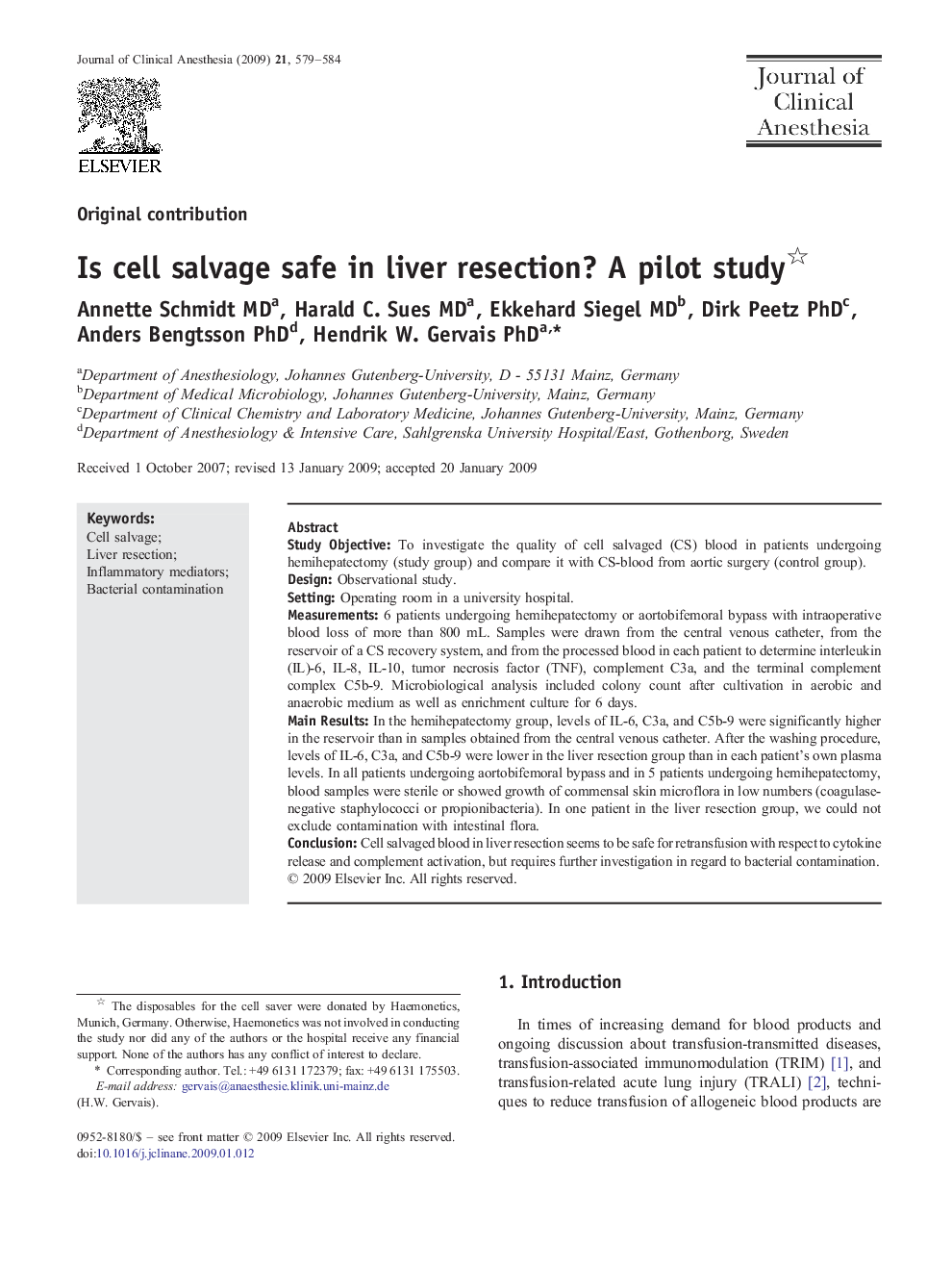| Article ID | Journal | Published Year | Pages | File Type |
|---|---|---|---|---|
| 2763268 | Journal of Clinical Anesthesia | 2009 | 6 Pages |
Study ObjectiveTo investigate the quality of cell salvaged (CS) blood in patients undergoing hemihepatectomy (study group) and compare it with CS-blood from aortic surgery (control group).DesignObservational study.SettingOperating room in a university hospital.Measurements6 patients undergoing hemihepatectomy or aortobifemoral bypass with intraoperative blood loss of more than 800 mL. Samples were drawn from the central venous catheter, from the reservoir of a CS recovery system, and from the processed blood in each patient to determine interleukin (IL)-6, IL-8, IL-10, tumor necrosis factor (TNF), complement C3a, and the terminal complement complex C5b-9. Microbiological analysis included colony count after cultivation in aerobic and anaerobic medium as well as enrichment culture for 6 days.Main ResultsIn the hemihepatectomy group, levels of IL-6, C3a, and C5b-9 were significantly higher in the reservoir than in samples obtained from the central venous catheter. After the washing procedure, levels of IL-6, C3a, and C5b-9 were lower in the liver resection group than in each patient's own plasma levels. In all patients undergoing aortobifemoral bypass and in 5 patients undergoing hemihepatectomy, blood samples were sterile or showed growth of commensal skin microflora in low numbers (coagulase-negative staphylococci or propionibacteria). In one patient in the liver resection group, we could not exclude contamination with intestinal flora.ConclusionCell salvaged blood in liver resection seems to be safe for retransfusion with respect to cytokine release and complement activation, but requires further investigation in regard to bacterial contamination.
